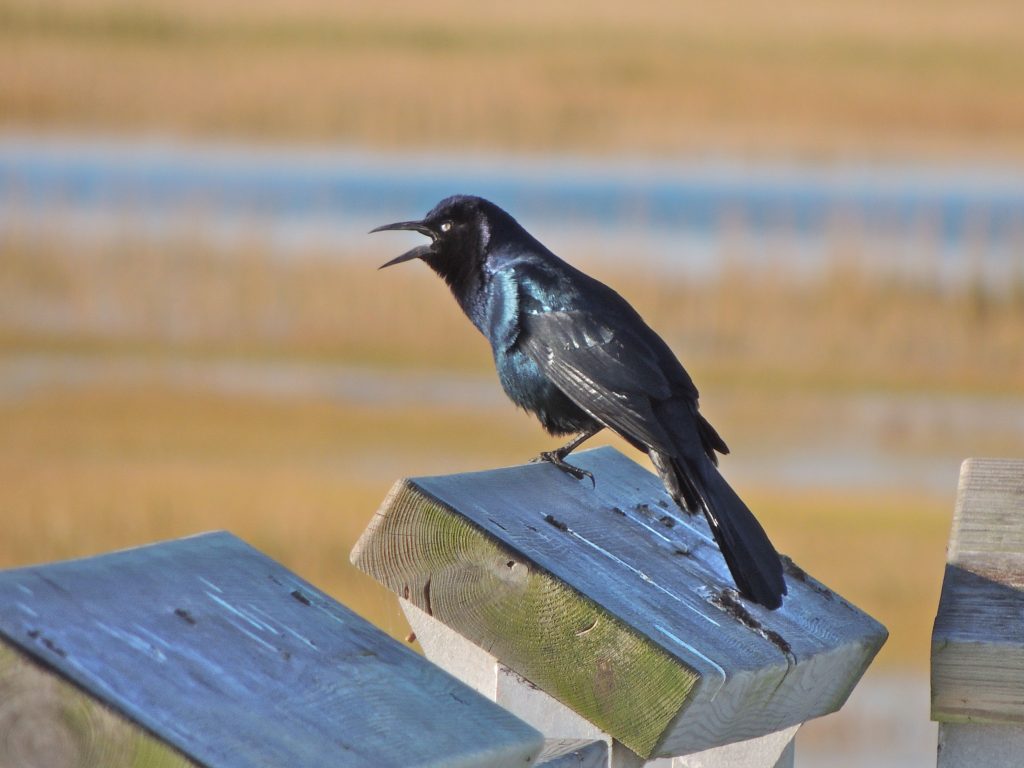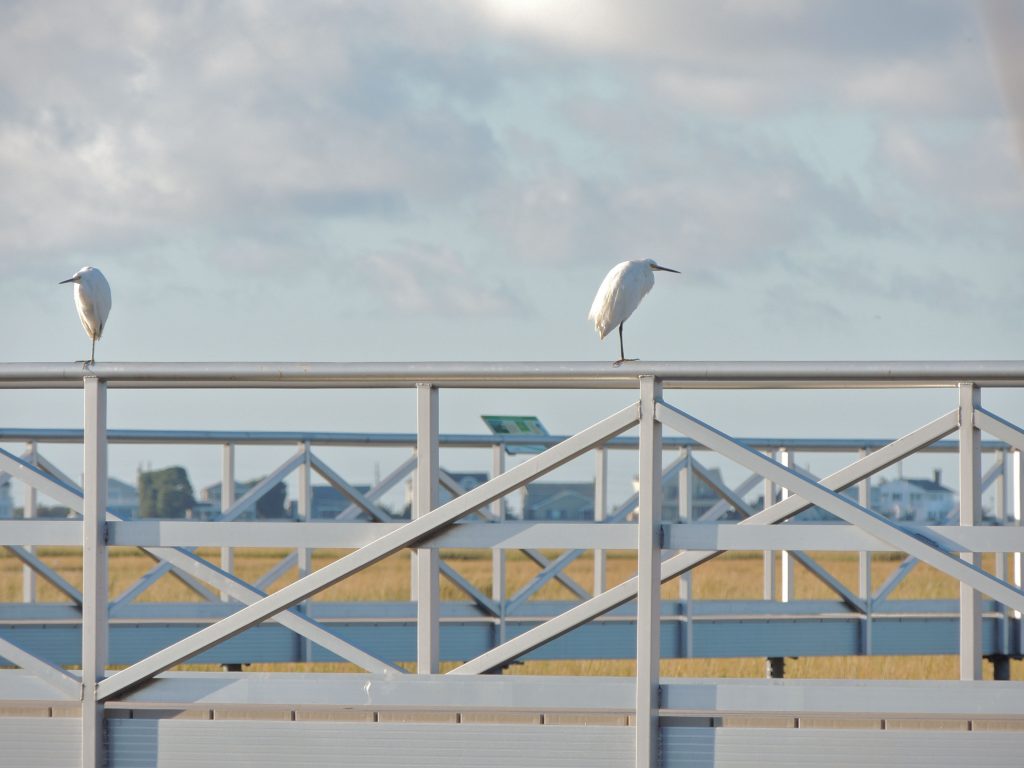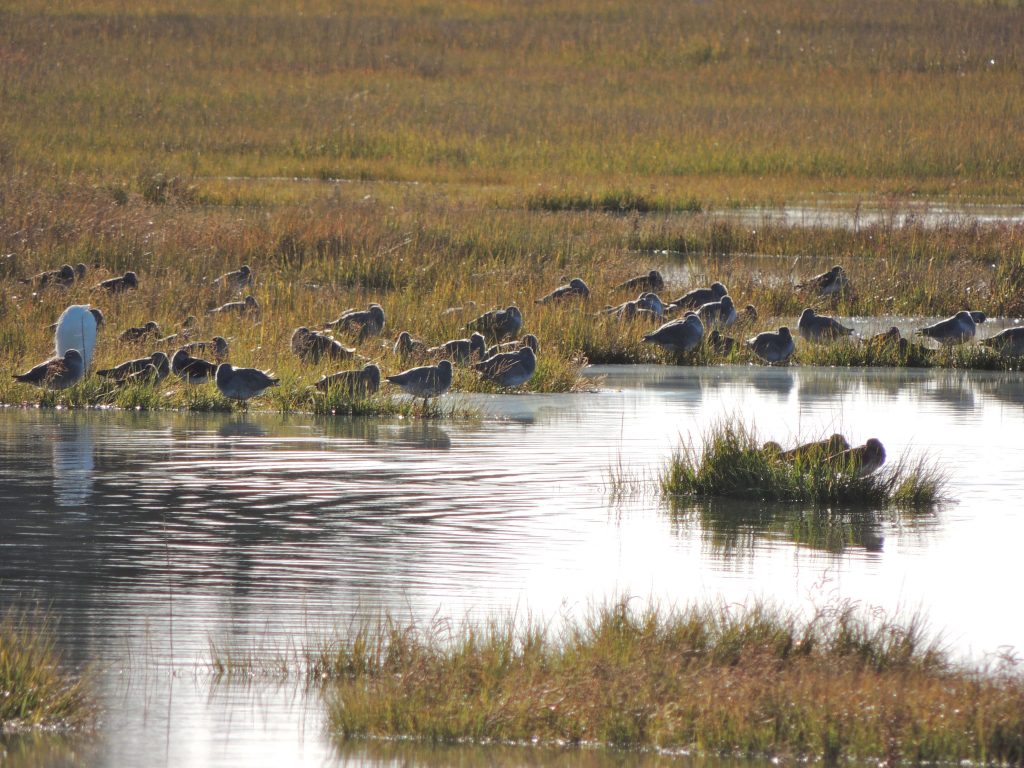October 16 2016 Wetlands Institute, Stone Harbor. New Jersey. Considering the variety of birds seen on this quick early morning walk, it rather surprised me when, in a retrospective moment, I realized that it a was a couple of Boat-tailed Grackles that came out tops as my Birds of the Day.

It’s not as though grackles make the grade in any of the usual great-bird adjectives, they’re not cute, engaging, majestic, secretive or colourful, They don’t sing, they’re not notably long distance migrants and they don’t particularly artfully exploit anyone or anything. They’re just there. But, as it happens, being there is what caught my attention. To me Boat-tailed Grackles are synonymous with some of the warmer parts of North America, Florida in particular, and anywhere along the Atlantic coast from Cape May south.
We were about to start a long day of driving on the second leg of our journey home from Virginia. The day before we had travelled from Williamsburg to Cape May, essentially just a 400 kilometer jaunt up the Delmarva Peninsula. Following this route filled a gap in my comprehension of this particular stretch of Atlantic coastline. It was a pleasant day’s journey through productive farmland which happens to be flanked along its Atlantic edge by some of the gaudiest development and commercialization of the sandy shore itself.
But today we faced a journey of some 800 kilometers (500 miles), a very full day especially if, like us, you prefer to minimize time spent on major highways. Before getting underway I wanted a deep inhale of birding-air, so we paid a rather quick visit to the Wetland Institute, a place with lots of good birding memories and close to the sea-side town of Stone Harbor.
On arrival the first sound was that of a pair of Boat-tailed Grackles sharing and airing their views on the state of the world from a look-out platform. They have a funny squeaky, ringing, clatter of a voice, described variously as “ chreet chreet keer, ee EEch “; possibly musical in a discordant, avant garde kind of way. But however described, their voice unfailingly reminds me of suburban Florida.
The nicely tended yet suitably unspoiled path at the Wetlands Institute has always been an easy and productive birding walk for me. In May the tidal flats hold such wonders as Whimbrel, Clapper Rails, Dunlin, American Oystercatchers and Short-billed Dowitchers in huge numbers.

Today it was a lot less frenetic but we spotted a pair of Snowy Egrets sitting quietly on the railing of an elevated path; they made a great picture. At the end of the trail we watched a Great Egret working its way around the edges of a small inlet. Uncountable numbers of Yellow-rumped Warblers were busy feeding among the Northern Bayberry bushes that line the path.
An interesting (I hope) side note here: Yellow-rumped Warblers were formerly called Myrtle Warblers, a reference to their ability to successfully overwinter along the Atlantic coast living largely on a diet of myrtle berries. Myrtle is the informal name of Northern Bayberry (Myrica pensylvanica), a common lowland shrub of the east coast (including seashores) of North America. Some forty or so years ago, avian name-callers decided to lump together the eastern Myrtle Warbler and the western Audubon’s Warbler as one species, the Yellow-rumped Warbler. They are very similar it’s true but by no means completely alike. Time marches on and we now hear that some un-lumping may occur. It’s possible that birders will once again have Myrtle Warblers, Audubon’s Warblers and possibly Goldman’s Warblers and Black-fronted Warblers, the last two in Guatemala and Mexico respectively. Declaring there to be four species where formerly (since 1973) there was only one is a possible bonanza to those who covet a life list.
As we were preparing to leave Wetlands Institute I noticed a flurry of movement in a pond some hundred feet or so distant. Huddled in the grasses there was, I think, the largest aggregation of Greater Yellowlegs I’ve seen for a long time, maybe ever. Confidentially I’m not certain that they are Greater Yellowlegs, it was hard to tell in the light but at that distance I fancied that I made out the slightly up-turned bill on one of them – indicative of Greater Yellowlegs, but if anyone has a better idea please leave a comment.

Nice photos! Did you manage to get a leg colour of the shorebirds? I’m wondering if they might be Willets based on size and (lack of) back pattern. Are they around in New Jersey?
Thanks Caleb. I couldn’t discern leg colour, as you can see they were pretty well crouched down. One flew briefly and I noted that there was no dark underwing so discounted willet.